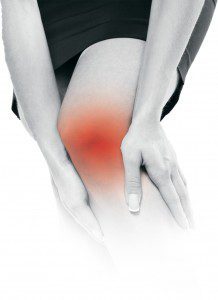By John C. Kagan, M.D. –


More than 30 million people in the U.S. have osteoarthritis; the knee is the most common joint affected. Some 30 percent of people over age 50 or an estimated 9.9 million adults are dealing with the pain, stiffness and swelling that occurs when cartilage begins to break down in the knee and the tissues become inflamed. Bone spurs may develop, further damaging the joint.
Who is at risk for osteoarthritis of the knee? AAOS statistics show that women are at slightly higher risk than men – anywhere from six to 13 percent of men and seven to 19 percent of women over 45 years old have been diagnosed with this common medical complaint.
Not surprisingly, as baby boomers get older, the number of people with osteoarthritis of the knee is expected to increase and unlike previous generations, baby boomers expect to be active older adults, which includes the desire to remain physically active throughout life.
What can be done to help patients cope with pain and disability? Here are the latest AAOS recommendations for
treating the knee:
1. Based on new FDA guidelines, the recommended dose for acetaminophen, a mild pain-relief medication commonly sold as Tylenol, has been reduced from 4,000 mg per day to 3,000 mg per day.
2. Non-steroidal anti-inflammatory drugs, commonly sold as Celebrex, Ibuprofen, Motrin or Advil, are effective in reducing inflammation and relieving mild to moderate pain.
3. Intra-articular corticosteroid injections are effective for short-term pain relief. The steroid medications is injected directly into the joint space of the knee to help reduce inflammation in thetendons and ligaments of the joint.
4. Low-impact aerobic exercise, such as walking, swimming and bicycling are encouraged to improve muscle tone and bone strength. In addition, individuals with a body mass index greater than 25 should pursue a diet and exercise plan to help lose weight to reduce stress on the knee.
5. The use of intra-articular hyaluronic acid injections are no longer recommended after the review showed no measureable improvement in the majority of patients. Hyaluronic acid, a natural substance made by the body that helps lubricate the joints, can become “thin” due to osteoarthritis. The goal of injections is to counteract the depletion of this fluid.
6. Glucosamine, chondroitin sulfate or hydrochloride supplements, along with custom-made wedge insoles for shoes, acupuncture and aspiration of the joint with saline also showed no measureable evidence of improvement.
7. Results are inconclusive about the use of pulsed electrical stimulation. bracing and manual therapy such as joint manipulation through chiropractic care.
It’s important to remember that because every patient’s situation is unique, the AAOS does not consider the guidelines as an absolute. Every person’s experience, symptoms and circumstances are different. individuals suffering from knee pain should consult an experienced orthopedic surgeon for an individually prescribed treatment plan.
Dr. John Kagan has more than 30 years experience as an orthopedic surgeon treating patients in Southwest Florida. He specializes in treating patients with knee, shoulder and hip pain, as well as general orthopedics and hand surgery. For more information go to www.kaganortho.com
 Southwest Florida's Health and Wellness Magazine Health and Wellness Articles
Southwest Florida's Health and Wellness Magazine Health and Wellness Articles

